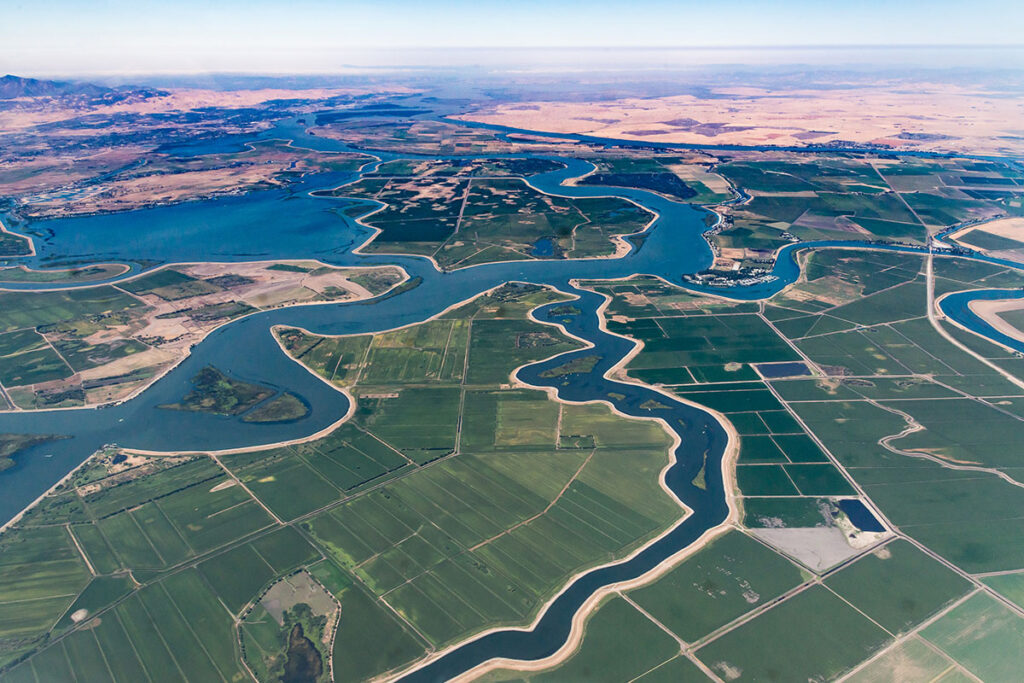In this unit, students investigate the water shortage in California as both a phenomenon to explain and a problem to solve. Students begin by defining the problem of water shortage and identifying all of the parties who are affected. This prompts students to wonder about solutions to water shortages and ways to meet water needs in communities across the state. Students investigate rainfall and compare it to water use. They also explore the water supply system, from dams and reservoirs, to aqueducts to transport water between regions.
Students analyze case studies and data to identify causes of the water shortage. They also evaluate the effects of past water management strategies, such as the Los Angeles Aqueduct and the Klamath River Dams. In doing so, students investigate the environmental, social, and economic factors that influence water management decisions, and reflect on solutions to improve water management and ensure a sustainable water future for California. The unit culminates with students developing an action plan for addressing the water shortage in their own community.

“Students were curious and continue to be curious. They are more aware of their surroundings than before and continue to point out observations daily.”
“From my students: ‘Thank you for teaching us this lesson because if you didn’t it would be bad for our environment.’ ‘This was awesome! Can you do more? Thank you!’ ‘Thank you for helping us in taking care of the environment.'”
“I truly enjoyed teaching this. It has been heartwarming to see them care about other living things and the environment.”
“The message that there are solutions to help us combat climate change and that people are working together to solve problems helped students stay in a place of curiosity; they didn’t show anxiety over the content.”
“I love how the data was more interactive and chunked into smaller pieces. I also like how there was a way to bring all the knowledge and wondering back to come up with a conclusion to the problem.”
“Students really enjoyed the hands-on activity. They were very interested to learn about the different pollutants that they’ve never heard of. It also developed their curiosity about air quality and pollution. It was an eye-opener for some that they are able to see what is mostly ‘unseen’ by everyone.”
“Students really wanted to share their food traditions and look into how climate change might affect their food traditions.”
“This lesson brought in cultural stories from the original people who inhabited California. This is a perspective that is not often taught in science. I think that the kids liked having science be a little less facts and figures and more story.”
“When you’re out in the workforce, you’re trying to solve problems that don’t have a clear, immediate answer. So doing stuff like this helps give students practice.”
“Every lesson was so thoroughly designed, the case study design book was beautifully organized, and it helped to give my class a real-life understanding of how college/graduate-level academic research works. Being able to connect their research back to environmental issues they actually experience was simply icing on the cake. Well done!”
“The kids become more engaged because now they are actually actively doing things. They’re really having to look for themselves. It’s not given to them on a platter, but all the resources are right there.”
“I am so amazed and impressed by the depth of resources that you embedded in the teacher guide. This is really well put together.”

Mackenzie Clark, Curriculum Developer
Brianna Reilly, Curriculum Developer
Logan Schmidt, Curriculum Developer
Tiffany Baca, Metropolitan Water District of Orange County
Nina Barcelli, Science Educator
Jean Flanagan, BSCS
Dina Gilio-Whitaker, CSU, San Marcos
Monica Maynard, Montebello USD
Milton Reynolds, Steering Committee
Karen Swan, Metropolitan Water District of Southern California
Matt Ellinger, Designer
Sara Krauskopf, Curriculum Developer
Stacey Lane, Illustrator
Susan Lyons, Development Editor
Ladie Malek, Development Editor
Josh Paschedag, Curriculum Developer
Laura Tucker, Science Educator
Craig Manges, Lemoore Union HSD
Katherine Morris, The Waverly School
Perri Rios-Dominguez, Salinas UHSD
Noel Rohland, Mt. Diablo USD
You’ll get news on Seeds to Solutions and environmental literacy from Ten Strands
"*" indicates required fields
© 2025 San Mateo County Office of Education and Ten Strands | Terms of Use | Privacy Policy